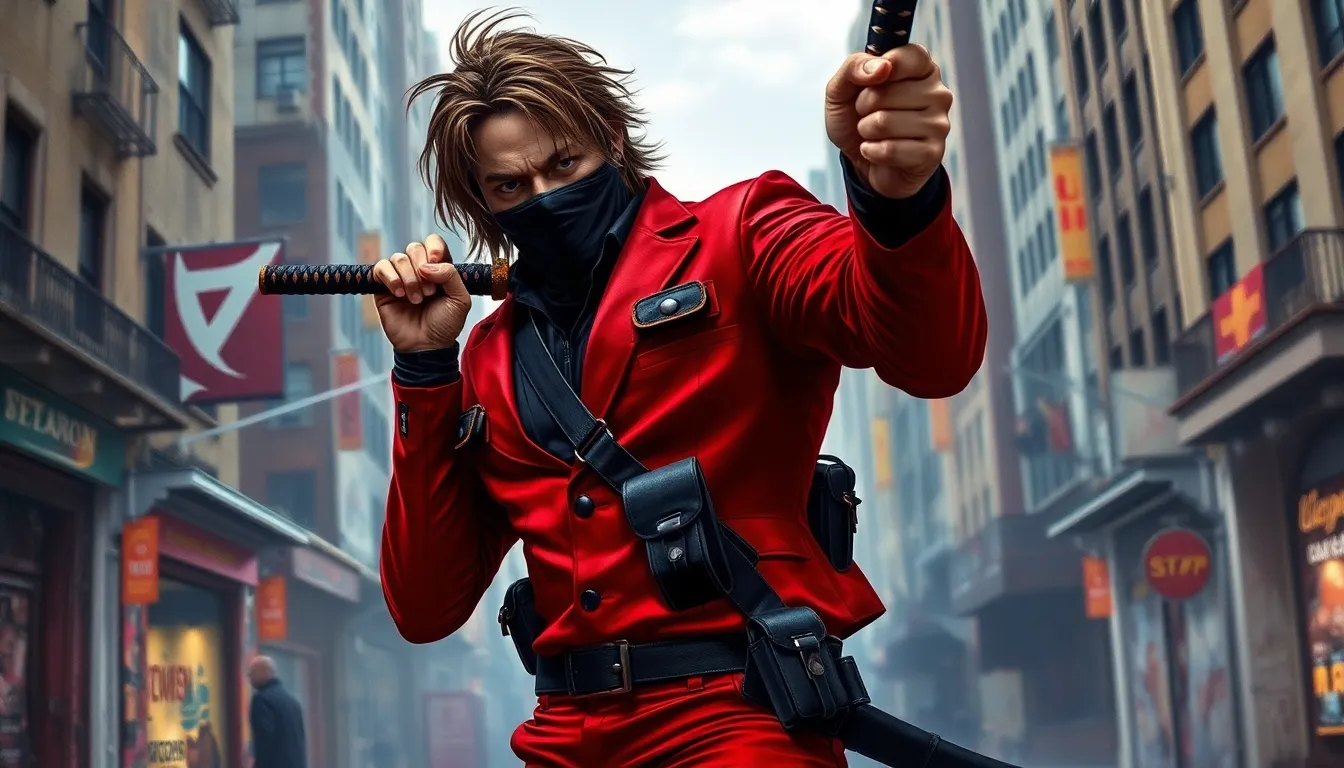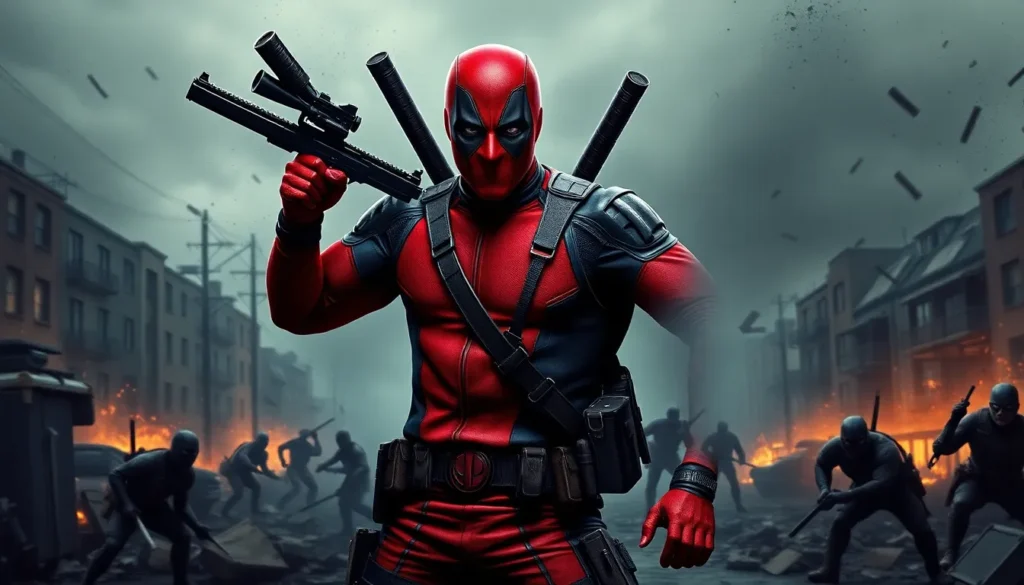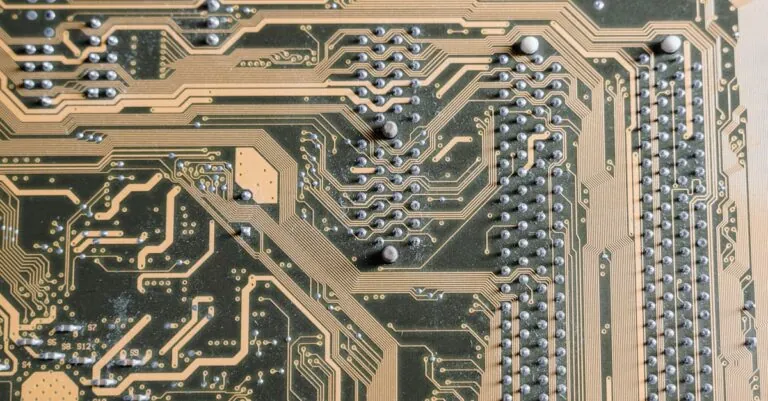Wade Wilson, better known as Deadpool, is a character shrouded in chaos and dark humor. His journey through the Marvel Universe is filled with violence, but it’s the question of whom he’s killed that often piques curiosity. From mercenaries to supervillains, Wade’s lethal encounters reveal not just his skills but also the moral complexities of a man struggling with his own demons.
Understanding who Wade Wilson has killed offers insight into his character’s evolution and the narrative that surrounds him. Each kill serves as a reflection of his tumultuous past and the choices he makes in a world where morality is often blurred. Dive into the depths of Deadpool’s history and discover the names that haunt his journey, as well as the implications of his deadly actions.
Table of Contents
ToggleOverview of Wade Wilson
Wade Wilson, known as Deadpool, stands as a complex figure in the Marvel Universe. With his background as a mercenary, he embraces chaos and humor, often employing violence to resolve conflicts. His unique healing factor, a byproduct of the Weapon X program, enhances his physical abilities and contributes to his reckless behavior.
Throughout his journey, Deadpool engages with various characters, including both heroes and villains. His lethal arsenal often targets mercenaries and supervillains, illustrating his skill set and moral ambiguity. The characters he kills reflect his tumultuous past; these encounters reveal the inner struggles he faces regarding his own morality.
Notable victims of Deadpool’s violence include T-Ray, a rival mercenary; Ajax, the man responsible for his mutation; and a series of unnamed henchmen from various criminal organizations. Each kill carries weight, impacting his psyche and narrative development within the broader Marvel context. Understanding his lethal encounters offers insight into his character evolution, emphasizing the blurred lines between heroism and villainy in his chaotic world.
Key Events Leading to Killings

Wade Wilson’s journey to becoming a killer involves critical events shaping his character and choices. These incidents, rooted in his early life and transformative experiences, lay the groundwork for his lethal path.
Early Life and Background
Wade Wilson’s upbringing significantly influenced his violent tendencies. Raised in a turbulent environment, he faced abuse, leading to struggles with self-worth. His early experiences of neglect and violence forged a connection to chaos, shaping his worldview. After serving in the military, he embraced a mercenary lifestyle, which brought him into contact with other violent individuals and criminal organizations. The decisions made during this period further entrenched him in a cycle of violence, setting the stage for his future confrontations.
Transformation into Deadpool
Wade Wilson’s transformation into Deadpool marked a pivotal moment in his life. After undergoing an experimental treatment for cancer, he gained accelerated healing abilities at the cost of his physical appearance. This radical change ignited his chaotic nature and dark sense of humor. As Deadpool, he embraced violence as a means to solve problems, leading to confrontations with various targets. His first notable kills included T-Ray, a rival mercenary who posed a threat, and Ajax, the scientist responsible for his mutation. Each kill reflected his emotional turmoil and duality, establishing a pattern of violence that would haunt him throughout his journey.
Significant Killings in the Comics
Wade Wilson, or Deadpool, has an extensive history of notable killings that emphasize his complex character. These encounters provide insight into the contradictions within him and the chaotic world he inhabits.
Major Enemies
Deadpool has eliminated several significant adversaries throughout his comic book history. These major enemies include:
- T-Ray: A rival mercenary with powers that mimic Deadpool’s, T-Ray symbolizes Wade’s insecurities and unresolved past.
- Ajax (Francis): The primary antagonist in the “Deadpool” film, Ajax tortured Wade during his transformation. Killing him represented both revenge and closure for Wilson.
- Taskmaster: This skilled combatant, known for his photographic reflexes, faced Deadpool in confrontations that drove Wade to lethal extremes.
- Bullseye: This assassin’s deadly accuracy posed a challenge to Deadpool, culminating in a violent showdown that showcased both characters’ ruthlessness.
Each confrontation highlights Wade’s violent tendencies and his struggle against figures that reflect his own chaotic nature.
Unlikely Victims
In addition to major foes, Deadpool has also taken the lives of unlikely victims, often adding layers to his moral complexity. These victims include:
- Weasel: In one timeline, Deadpool mistakenly kills his close friend Weasel during a miscommunication, showcasing the tragic and chaotic consequences of his actions.
- Blob: An unexpected victim in Deadpool’s history, Blob’s death stemmed from a pivotal moment where Wade chose violence over reason, amplifying his tragic narrative.
- Various henchmen: Countless unnamed henchmen meet their end at Deadpool’s hands, often serving as collateral damage in his personal vendettas, emphasizing the chaos surrounding him.
These killings serve as a stark contrast to Wade’s occasional glimpses of humanity and self-awareness, deepening the exploration of Deadpool’s fractured psyche.
Wade Wilson in Film Adaptations
Film adaptations of Wade Wilson, known as Deadpool, effectively capture his chaotic essence and dark humor. These portrayals showcase his violent encounters while balancing comic relief and emotional depth.
Representation of Killings
Film adaptations present Wade Wilson’s killings with a blend of dark comedy and intensity. He targets various adversaries, offering a glimpse into his lethal skills. Notable representations include:
- Ajax: The primary antagonist in Deadpool faces Wade with a mix of physical confrontation and witty banter, resulting in Ajax’s demise.
- T-Ray: In Deadpool 2, T-Ray’s character shines through Wade’s backstory, highlighting a significant rivalry and ultimately leading to violence.
- Criminal Henchmen: Numerous unnamed henchmen meet their end, demonstrating Wade’s merciless nature while punctuating scenes with humor.
These killings resonate within the narrative, emphasizing the moral complexities of Wade’s character and the psychological weight each kill carries.
Differences from Comics
Adaptations diverge from comic portrayals in various ways. Key differences include:
- Character Depth: Films emphasize Wade’s emotional struggles more than comics, portraying his tumultuous relationships with characters like Vanessa.
- Kill Count: While comics depict a broader range of kills, films focus on fewer but more significant encounters, shaping Wade’s development.
- Tone and Pacing: The films emphasize comedic timing and action sequences, altering the pacing of confrontations compared to the comics’ elaborate backstories and motivations.
These variations enhance viewer engagement and contribute to a deeper understanding of Wade Wilson’s character in cinematic narratives.
Analysis of Themes
The character of Wade Wilson, known as Deadpool, explores complex themes surrounding morality and violence within the Marvel Universe. His actions and the resulting consequences highlight a multifaceted perspective on his chaotic lifestyle.
Moral Implications
Wade Wilson’s killings raise significant moral questions. Each target illustrates a blurred line between right and wrong in a world filled with ambiguity. The murders of adversaries like Ajax and T-Ray point to revenge-driven motives, reflecting his ongoing internal conflict. Deadpool often rationalizes his violence, seeing it as a necessary means to an end. This mindset complicates viewers’ perceptions of morality, forcing them to confront the justification behind his lethal decisions. His chaotic nature challenges traditional heroism, framing him as an anti-hero whose violent choices prompt deeper moral reflections.
Consequences of Violence
The aftermath of Wade Wilson’s violent actions presents dire consequences that ripple through his life and those around him. Each kill not only impacts his psyche but also affects his relationships, as seen in the tragic death of his friend Weasel. Such incidents reveal the collateral damage of his lifestyle, illustrating how violence begets more violence. Deadpool’s encounters with powerful enemies often lead to relentless repercussions, placing him in a cycle of perpetual conflict. These consequences further complicate his character development, emphasizing the emotional burden he carries and the haunting memories of those he has killed.
Wade Wilson’s journey as Deadpool is marked by a series of significant killings that shape his character and moral landscape. Each victim not only showcases his lethal skills but also highlights the emotional turmoil and complexity of his psyche. The tragic consequences of his actions resonate throughout his life and relationships, leaving a lasting impact that complicates his anti-hero status.
As viewers and readers delve into the chaotic world of Deadpool, they’re invited to reflect on the blurred lines of morality that define his existence. The interplay between humor and violence creates a unique narrative that challenges conventional notions of right and wrong, making Wade Wilson a compelling figure in the Marvel Universe.



